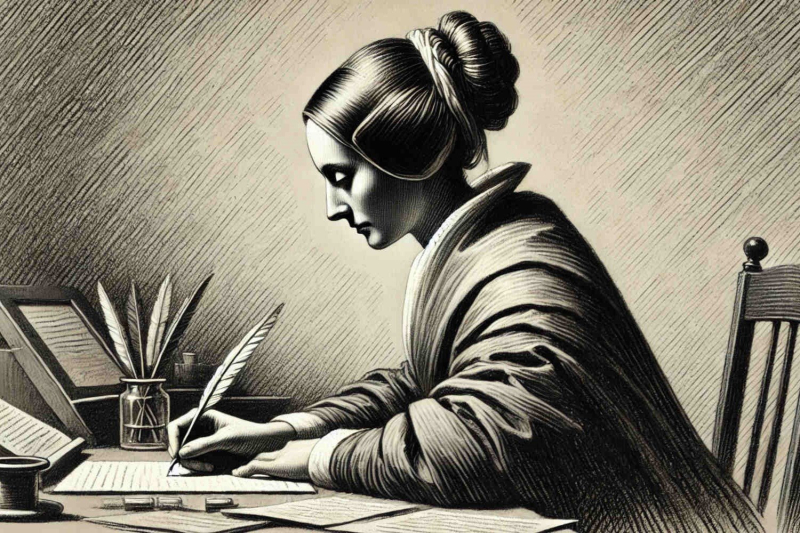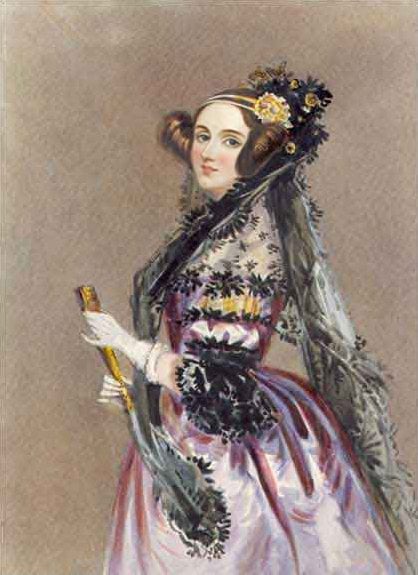
© Image generated by DALL-E AI for Presse-Citron
When we talk about technology, we often look to the future. Which AI model will outperform all others ? Which next generation of GPUs will topple all previous ones ? Which premium smartphone will become the benchmark ? It is this quest for the “ more “, the “ better ” and the “ faster ” that drives this particular sector. Yet, looking back at the past to better understand the present is an equally important intellectual exercise. Let us not forget that all the technological objects that we use on a daily basis are more or less directly derived from the brilliant minds of precursors, sometimes fallen into oblivion.
It is the story of a precursor that we are going to deal with today. In Victorian England, An exceptional woman laid the theoretical foundations of modern computing, a century before the invention of the first computer. Ada Lovelace, daughter of the famous poet George Gordon Byron, transcended the conventions of her time to become the first female programmer in history.
An extraordinary education in the shadow of an absent father
Born Augusta Ada Byron on December 10, 1815 in London, Ada was the product of a troubled union between Lord Byron and Annabella Milbanke. A month after his birth, his mother fled the excesses of a violent husband, after having suffered four attempted rapes while drunk. This separation, made official on April 21, 1816, marked Byron's final departure from the United Kingdom, leaving behind a daughter he would never know.
Determined to protect Ada from the Byron's tumultuous legacy, Lady Annabella, nicknamed “the Princess of Parallelograms” because of her passion for mathematics, would give her daughter an exceptionally rigorous scientific education. This approach, revolutionary for a young girl of the Victorian aristocracy, quickly bore fruit.
In 1832, Ada had a fateful encounter with Mary Somerville, a 19th-century Scottish scientist, who became her mentor and fueled her appetite for science. Ada's intellectual circle gradually expanded, including figures such as Charles Dickens, David Brewster, Charles Wheatstone, and Michael Faraday.
Her marriage in 1835 to William King, the future Earl of Lovelace, far from curbing her intellectual ambitions, offered her valuable support in her mathematical research. Despite three pregnancies and fragile health, Ada continued her studies under the tutelage of the renowned mathematician Auguste De Morgan, who recognized in her an extremely brilliant and creative student.

Ada Lovelace in 1840, painted by Alfred Edward Chalon, a Swiss portrait painter. © Alfred Edward Chalon/Wikipedia
The decisive meeting with Charles Babbage
In 1833, at the age of 17, Ada met Charles Babbage, a major figure of mathematical sciences of the time. This encounter changed the destiny of the young woman, who found in Babbage a father figure and a mentor of ;exception. Immediately fascinated by his calculating machines, Ada develops an intense intellectual relationship with him.
The collaboration between Babbage and Ada took on a special dimension in 1842, when she undertook the translation of an article by the Italian mathematician Louis-Frédéric Ménabréa describing Babbage's analytical engine (a programmable mechanical calculator). During nine months of hard work, she was not content with a simple translation, but would considerably enrich the original text.
200% Deposit Bonus up to €3,000 180% First Deposit Bonus up to $20,000Her seven explanatory notes, labeled A to G, triple the volume of the article and demonstrate Ada's deep understanding of her mentor's machine. While Babbage, who was ill, only intervened marginally in this work, she demonstrated a revolutionary vision of the possibilities of the machine. In particular, she imagined that it could manipulate symbols rather than simple numbers, thus anticipating the concept of the universal computer that Turing would formalize a century later.
The revolutionary legacy of a pioneer
The G Note of her annotations marks a turning point in the history of computing. There she developed what would be considered the world's first published computer program: an algorithm for calculating Bernoulli numbers, a sequence of rational numbers appearing in many mathematical formulas, particularly in the calculation of sums of powers of integers and in the series expansion of certain functions.
This major innovation introduced the first conditional loop in history, the cornerstone of modern programming. A conditional loop in computer science is a control structure that allows a block of instructions to be repeated as long as a certain condition is verified. In other words, it is like a vicious circle in a program: we do something, then we check whether we should start again. If the condition is still true, we start again. Otherwise, we exit the loop. A fundamental building block of computer programming.
The novel formalism of its algorithm demonstrates an exceptional understanding of the mechanisms of automated calculation. Ada is even more visionary since she perceives that machines could do much more than simple mathematical calculations: ” Many people […] imagine that because the Machine produces results in numerical form, then the nature of its processes must necessarily be arithmetic and numerical, rather than algebraic or analytical. This is a mistake. The Machine can arrange and combine numerical quantities just as if they were letters, or any other general symbol ” we read in his notes.
His tragic end came on November 27, 1852, taken at the age of 36 by uterine cancer after intense suffering. Her later years were marred by gambling debts, incurred in the hope of financing Babbage's projects through a horse-racing betting scheme for which she devised a prediction system.
Forgotten for more than a century, his contribution was rediscovered with the advent of modern computing. Her legacy shines worldwide today: the Ada programming language, created for the US Department of Defense, is named after her, as are the asteroid (232923) Adalovelace and the cryptocurrency Cardano, whose unit is called Ada.
Ada Lovelace Day, celebrated every second Tuesday in October, honors her legacy by promoting women's contributions to science. Prestigious institutions such as the École Polytechnique Fédérale de Lausanne have named places in her honor, while her portrait adorns the authentication holograms of Microsoft products. More recently, NVIDIA chose her name for its RTX 4000 graphics architecture, thus perpetuating the memory of this brilliant scientist.
Rarely has a woman like Ada been so far ahead of her time, even more so in a field largely dominated by men. This was well before most of her contemporaries grasped the importance of her work. If she had not existed, the history of computer science and even that of artificial intelligence would have taken an undeniably different path. We would have discovered that later the potential of calculating machines, the formalization of programming would have been delayed and it is certain that women would have been even more underrepresented in the field of computing for several decades.
- Ada Lovelace, a pioneer in computing, designed the first algorithm for a machine, foreseeing the possibilities of modern computers.
- Educated in an exceptional environment, she collaborated with Charles Babbage and anticipated key concepts such as conditional loops and symbolic manipulation.
- Her influence continues today, leaving a lasting mark on science and technology, with distinctions such as the Ada language and a day dedicated to her memory.
📍 To not miss any Presse-citron news, follow us on Google News and WhatsApp.

